Last month we began a series of nature hikes in the Pensacola Beach area to describe some of the wildlife locals and visitors can find. January was pretty cold, some days getting below 20 F, but February has been very different – may reach 80 F today – bizarre change.
So what’s change with nature on our beach?
Well, first – I am now seeing reptiles and amphibians. Do not know whether another front or two will pass this way and force them into hiding again, but this past week they were certainly out. I could hear numerous frogs singing and found two snakes – a cottonmouth and a rattlesnake.
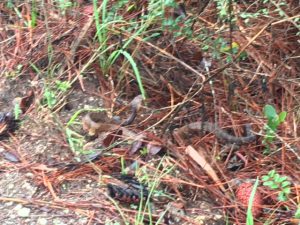
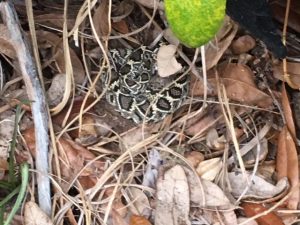
Photo: Rick O’Connor
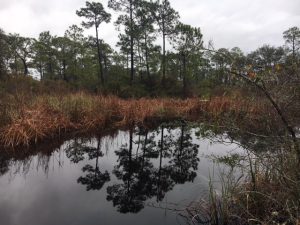
Photo: Rick O’Connor
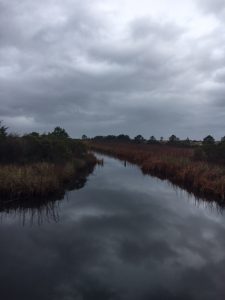
Photo: Rick O’Connor
During the month of January, the east end of the freshwater canal was quite turbid – almost clay looking – but it had cleared quite a bit by February. Though the False Rosemary was still the flower we could see, some pine trees were beginning to develop their male cones – pollen time is not far away.
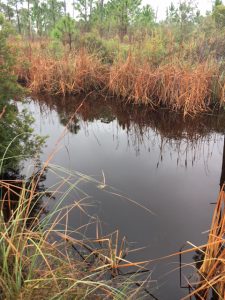
Photo: Rick O’Connor
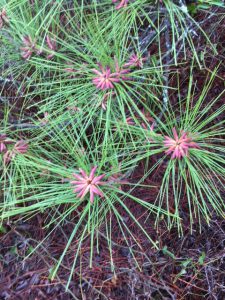
Photo: Rick O’Connor
Birds are still the big players in wildlife viewing. The mocking birds and cardinals, common in January, were now joined by cat birds and red-winged blackbirds. The numerous great blue herons, seen in the tops of the pine trees in January, were still around – but gathered in groups as they were before. New to the landscape were two great horned owls. I made two hikes in February and saw them in the same area both times. Could not see their nest but assume this is what they were up to. Also beginning nesting were the ospreys. During both February hikes I saw a bald eagle flying along the beach. Not sure if there are two, or if there was a nest, but they are there.
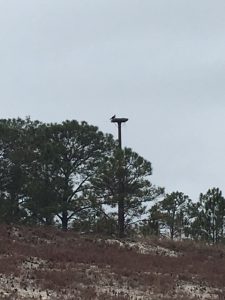
Photo: Rick O’Connor

With this warmer weather, the armadillos are VERY active. On one hike we saw six different individuals digging for insects. The shoreline was relatively cleaned of natural and plastic debris this month. Probably due to storms and strong tides carrying material away. But there were some interesting shells to be found.
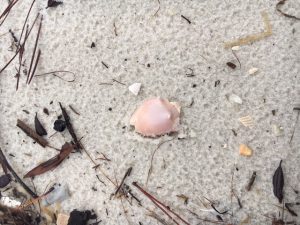
Photo: Rick O’Connor
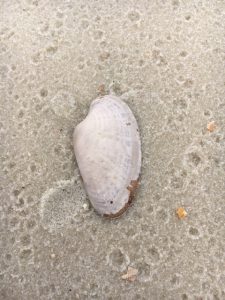
Photo: Rick O’Connor
Marine debris was not as common this month, again probably due to be washed away during a storm of the blue moon tide, but still here. Plastic bottles and plastic straws are common – and can be reduced. You can reduce plastic water bottles by purchasing your own water bottle and refilling. Many people prefer to use straws, but you can use a paper one instead of a plastic one. These are one-time use products and whether they are paper or plastic really does not matter. Encourage your favorite food establishment to carry paper straws. Plastic bags can be very problematic for marine life. There are numerous photographs of sea turtles consuming these thinking they were jellyfish. We once saw a dead sea turtle that had numerous plastics stuck in its throat. Remember, if you “pack it in” “pack it out”.
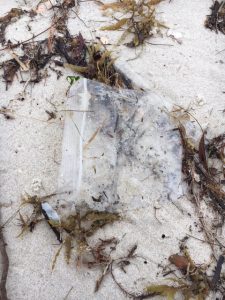
Photo: Rick O’Connor
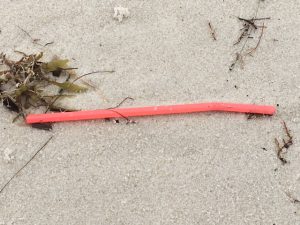
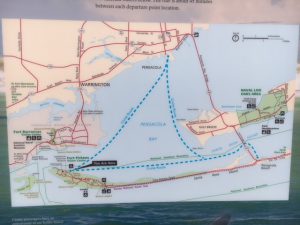
Photo: Rick O’Connor
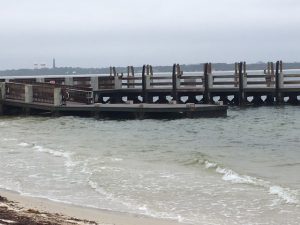
Photo: Rick O’Connor
We encourage all to take a hike on our barrier islands. There is much to see.
 0
0
